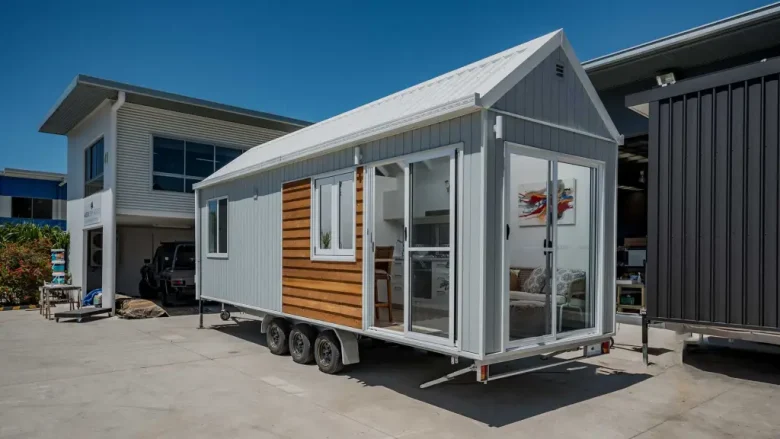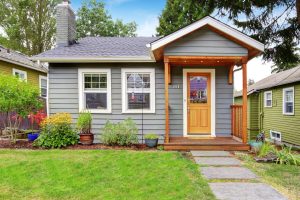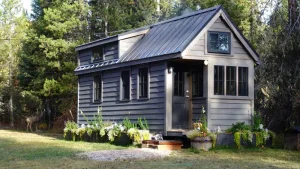Many people are intrigued by the idea of tiny houses on wheels because it is a new way of living. These small mobile homes offer an easy way of living that is eco-friendly and free. But before you start building the tiny house on wheels of your dreams, it’s important to understand the basics of code. This way you can be sure that your project meets the legal and safety standards.
1. Know the Rules
Before you start building a tiny house on wheels, you should know the rules and laws in your area. Building codes vary from state to state and even city to city, so it’s important to know the laws in your area. This research will help you figure out issues like size restrictions, safety standards, and whether your tiny house is considered a recreational vehicle (RV) or permanent residence.
2. Foundation and Mobility
A nice feature of the tiny house on wheels is that it is movable. But this quality also makes it difficult to comply with building regulations. Make sure your tiny house’s base and moving parts, such as axles, wheels, and towing equipment, meet safety standards. To do this, you may want to speak with an expert in tiny house building and mobile home building to make sure your project is both safe to build and safe to drive.
3. System and Utilities
Usually water, electricity and sewerage have to be built in small houses on wheels. For your safety and the protection of the environment, it is important to follow the rules of these methods. Many regulations dictate that wastewater, electrical wiring, and the use of propane gas must be disposed of in a safe manner. Working with someone who understands mobile home systems can help you properly plan and install these utilities.
4. Fire Safety Measures
Fire safety is an important part of every home, including tiny houses on wheels. Be sure to use refractory materials and leave enough space between tools and objects that could cause a fire. In addition, you need effective smoke detectors, fire extinguishers and escape routes to meet safety standards and protect the residents of your tiny house.
5. Consider Zoning and Parking
Even though your tiny house on wheels is mobile, that doesn’t mean you can park it anywhere without heeding building codes. See where you can properly park your tiny house by consulting the rules. In some places you may park on private property, while in others you may only park in RV parking spaces. By following these rules, you not only comply with the law, but also ensure that you have access to services such as water and electricity connections.
6. Structural Integrity
For safety and long-term use, the structural stability of the small house on wheels is the most important. Despite its small size and apparent simplicity, a tiny home still requires the use of engineering principles to design and build. Work with experts who understand how difficult it is to build small mobile structures. By placing weight in the right places, using high-quality building materials, and reinforcing key areas, you can ensure that your tiny home can handle the road and changing weather conditions.
7. Heating, Cooling and Ventilation
To make your tiny house a comfortable place to live in, you need to think carefully about air and insulation. Good insulation keeps the temperature in your home stable and saves energy. Proper airflow, such as windows, vents, and fans, not only improves air quality, but also prevents moisture buildup, which can lead to mold and structural problems. Living there is healthier and more fun if you follow the rules of these places.
8. Ways to Get in and Stay Safe
Tiny houses are known for their space efficiency, but it’s important to make sure it doesn’t get in the way of your moves. Follow light rules to help people with mobility issues. Also add safety features such as sturdy handles, non-slip areas and good lighting. Not only are these features great, but according to building codes, they may be necessary to keep everyone living in your tiny home safe.
9. Paperwork and Permits
Building a tiny house on wheels is a lot of work and you need the right paperwork to get it done. Depending on the regulations in your area, you may need building, parking and rental permits. By accurately documenting your design, how it was built, and what materials were used, you can speed up the permitting process and demonstrate compliance with all rules and codes.
10. Expert Advice
Building rules can be difficult to understand, especially if you’re new to the world of building or tiny houses. It can be very helpful to get advice from someone who knows a lot about tiny house building, design, laws and urban planning. Working with an expert who knows the latest rules and codes in your area ensures that your tiny house project stays on track from start to finish.
Conclusion:
In the world of mobile living, building a tiny house on wheels is an exciting, unique and sustainable way of living. To ensure that your tiny home is not only a dream come true, but is also safe and legal, you need to know how to navigate complex building codes, regulations, and safety standards. Every part of a well-designed and legal project is important, from knowing local regulations and making sure the base can be moved to adding utilities, fire safety measures and accessibility. By following this basic code and getting help from a pro, you can confidently start building your tiny house on wheels, knowing that you are building something that is as innovative as it is legal.
FAQs:
1. What is the first step to take when building a tiny house on wheels?
The first steps include researching local building codes and regulations specific to your area. Understanding foundation and mobility requirements and installing utilities is critical before embarking on any project.
2. Can I park my tiny house on wheels anywhere?
Parking rules vary by location. Some areas allow parking on private property, while others require designated RV parking. Research local zoning regulations to ensure parking regulations are followed.
3. Do I need a permit to build a tiny house on wheels?
Yes, you generally need a building, parking and habitation permit. Keeping accurate records of the project design and construction process will assist in obtaining the necessary permits.
4. How do I ensure the structural integrity of my tiny home?
It is essential to work with a professional who has experience building tiny houses. They can help you distribute weight correctly, choose quality materials, and reinforce key areas to ensure your tiny house is structurally sound.
5. Are there accessibility requirements for wheeled cabins?
Yes, it is very important to follow accessibility guidelines to accommodate people with reduced mobility. Including features such as handrails, non-slip surfaces and adequate space is well thought out and may be required by law.



